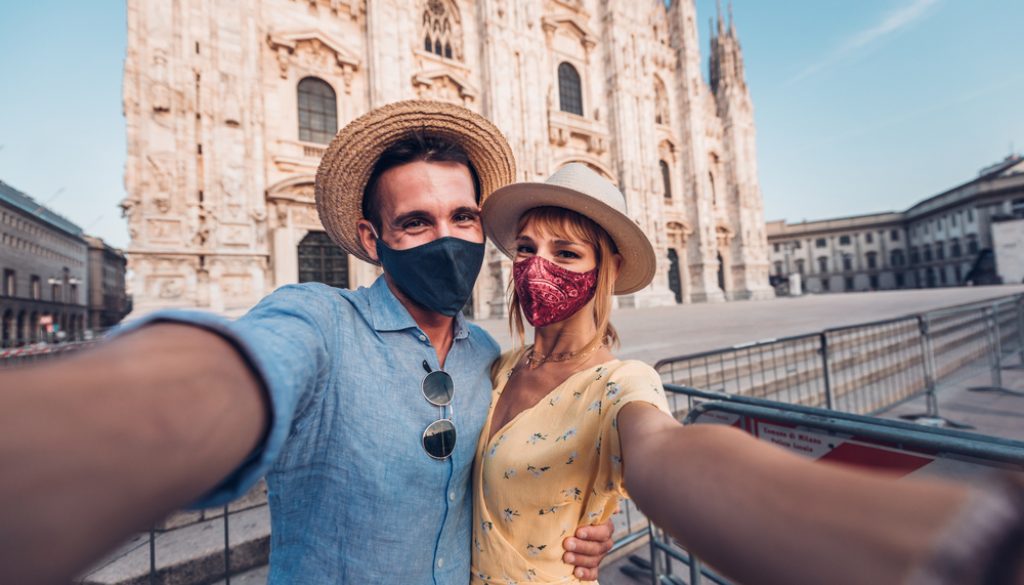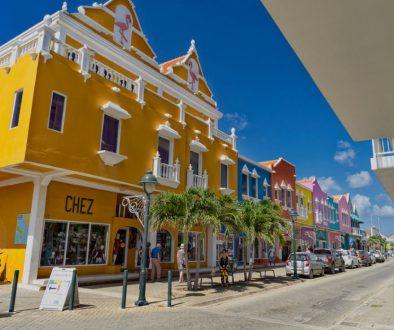Everything You Need to Enter Italy in 2022
The several waves of the pandemic had put Italy in a state of emergency, and it was one of the first European countries to suffer from it.
Although the nation has emerged from a third-wave lock down, case counts are being tracked regularly, and individual regions may re-institute limits at any moment.
The entry to Italy is restricted to passengers coming from specific countries only, and more rules are in place that you should know about before booking your flight or trip.
The Documents You Need to Enter Italy
The documents and the procedure you need to enter the country vary depending on your country of origin (nationality or where you reside 14 days before departure).
However, the must-have documents for all passengers are a Passenger Locator Form, proof of vaccination, and a negative Covid-19 test result.
There may be a quarantine process to go through depending on several factors, and we’ll go through them later in the following paragraphs.
What is the Passenger Locator Form?
The Italy passenger locator form is a mandatory form that is valid in Italy, France, Malta, and Slovenia. It enables health authorities to quickly reach out to passengers that were potentially exposed during their travels, and this allows to contain the spread of the novel coronavirus.
You can register and fill in your PLF on our website with your information. After that, a QR code will be sent to you as a PDF file in order to enter Italy.
The following information will be asked upon filling the form:
- Your country of origin and final destination
- How you plan to travel – car, flight, or else
- Travel and personal details
- Accommodation and address information in Italy
- Emergency contact details
Last but not least, having your PLF ready when entering isn’t enough, and more papers are required. Below is all the paperwork you need.
What About the Green Pass?
The Green Pass is the European QR code system that registers each individual’s medical history related to Covid-19. Travelers (as well as locals) need to get a QR code in order to go to restaurants, long-distance public transportation, join nightlife events, and more.
The European Green Pass can be obtained by getting the Immuni mobile app on your phone and signing up with your personal information.
COVID-19 Vaccines Accepted to Enter Italy
As mentioned previously, the PLF is not enough to enter Italy, and you will need to be fully vaccinated. The Covid-19 vaccines that are approved to get inside the country are the following:
- Johnson & Johnson by Janssen
- Pfizer-BioNTech by BioNTech Manufacturing GmbH
- Spikevax, previously Moderna by Moderna Biotech Spain
- Vaxzvria, previously AstraZeneca by AstraZeneca Ab
It’s worth noting that passengers must have received their two or last dose at least 14 days before traveling to Italy in order to be recognized as such.
What Countries Can Enter Italy?
Numerous countries are now allowed to enter Italy, but all the nations around the world belong to a list, and specific requirements apply to each of them.
Countries in List C, D, and E
Before knowing the entry regulations to travel to Italy, you should know which list you belong to, whether you’re a citizen or spend time in the country 14 days before arrival.
To start with, the European countries are part of the country list C, and the nations below are included in it:
- Andorra,
- Austria,
- Belgium,
- Bulgaria,
- Croatia,
- Cyprus,
- The Czech Republic,
- Denmark,
- Estonia,
- Finland,
- France,
- Germany,
- Greece,
- Hungary,
- Iceland,
- Ireland,
- Latvia,
- Liechtenstein,
- Lithuania,
- Luxembourg,
- Malta,
- Monaco,
- Netherlands,
- Norway,
- Poland,
- Portugal,
- Romania,
- Slovakia,
- Slovenia,
- Spain,
- Sweden,
- Switzerland.
Passengers flying/driving from these areas can travel to Italy whether they are nationals or stayed there in the previous 14 days before arrival.
Travelers from List C countries have to fill in a Passenger Locator Form as well as get a Green Pass or a similar document. If the passengers cannot show the documents stated here previously, they will be required to quarantine for 5 days and then take a test.
Moreover, countries on the list D are the non-European countries. These allowed nations are:
- Australia,
- Bahrain,
- Canada,
- Chile,
- Israel,
- Japan,
- Jordan,
- Kosovo,
- Korea,
- Kuwait,
- New Zealand,
- Qatar,
- Rwanda,
- Saudi Arabia,
- UAE,
- UK,
- USA,
- Ukraine,
- Uruguay,
- Taiwan,
- Hong Kong
Like list C countries, passengers coming from list D must have to provide proof of full vaccination and a negative antigen or PCR test taken 72 hours before arrival. Passengers coming from the UK can take a test 48 hours before arrival.
On the other hand, travelers from Japan, Canada, and the USA can provide proof of recovery instead of a vaccination record.
Similar to list C countries, the ones on list D must quarantine for five days should they not be able to provide the necessary paperwork. After the 5-day self-isolation, a test is required, and the results must be negative.
Passengers coming from C and D listed countries must provide a negative test upon arrival. Furthermore, travelers from both C and D listed countries have to quarantine for five days upon arrival in case they are not vaccinated.
Last but not least, foreign nationals coming from countries not mentioned above are listed in list E, and a strict entry procedure applies to them. A 10-day isolation and a negative test result will be needed in order to be released.
Children under six years old do not need a test to get into Italy, and they will follow their parents’ procedure. For example, if their parents are in quarantine, their kids will need to stay with them.
What to Expect from a Trip to Italy During Covid?
The hospitalization infection rates for Italy’s different regions are now graded from white (lowest risk) to yellow, orange, and red (highest risk) – ranging from the safest to the riskiest areas. Yellow, amber, and red regions are mandated to wear a mask even outside.
With the discovery of the novel Omicron variant, expect more areas to be impacted by this mandate.
Also, face masks are required on public transportation and crowded places in big cities such as Venice, Rome, or Bologna. Social distancing must be observed on regular public transit; however, this isn’t the case for long-distance buses or trains since the Green Pass is required. It’s crucial to note that any train with a passenger infected with Covid-19 may be halted.
White zones are back to normal, and no special rules apply. Yellow zones have a face mask mandate everywhere, even outside. Restaurants are allowed to remain open until 11.00 pm, and shops are open as usual.
In orange areas, restaurants can offer takeaway meals only, and people are allowed to move freely in their own city but can only leave for work or emergency.
In the red area, shops are closed, and only pharmacies and grocery stores are open. People are allowed to leave their accommodation for health purposes, work, or go to exercise.
Note that no regions are in orange or red colors as of now. However, we recommend checking the latest updates since the arrival of the new variant may make things riskier.



